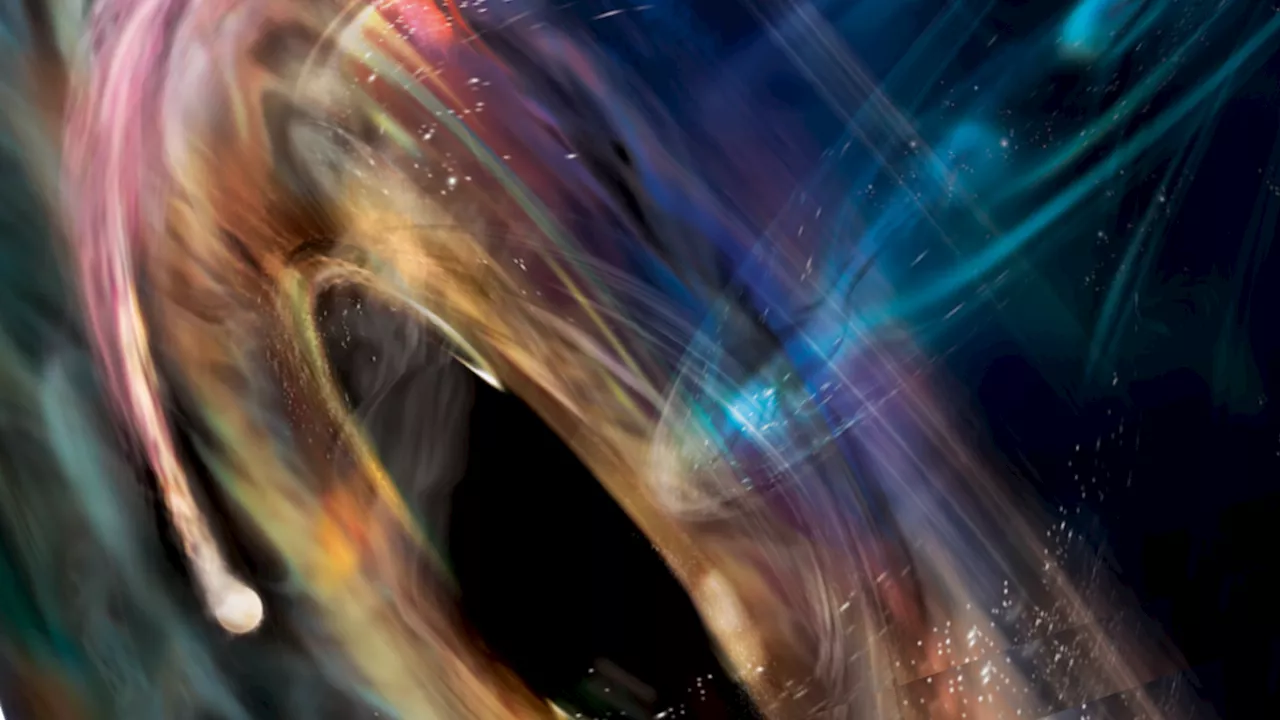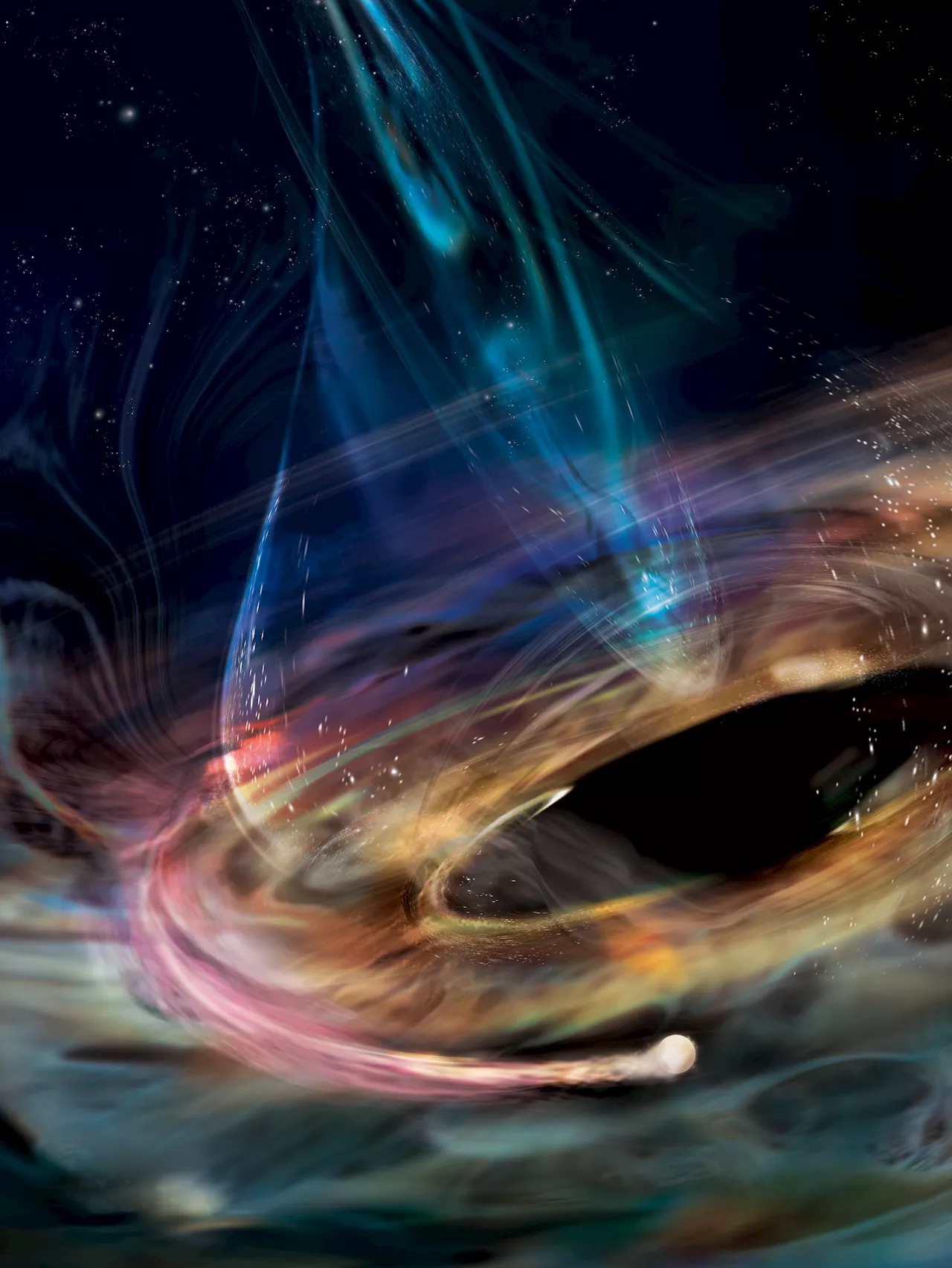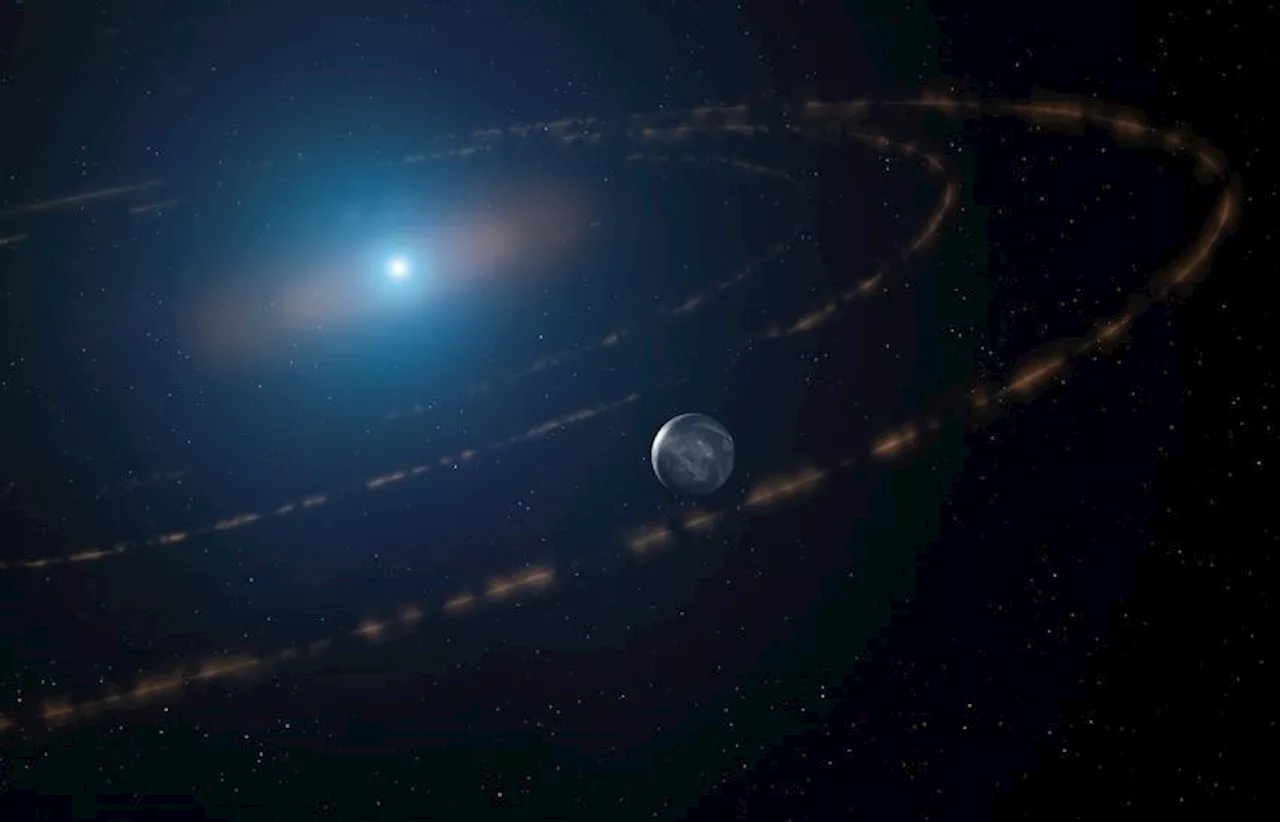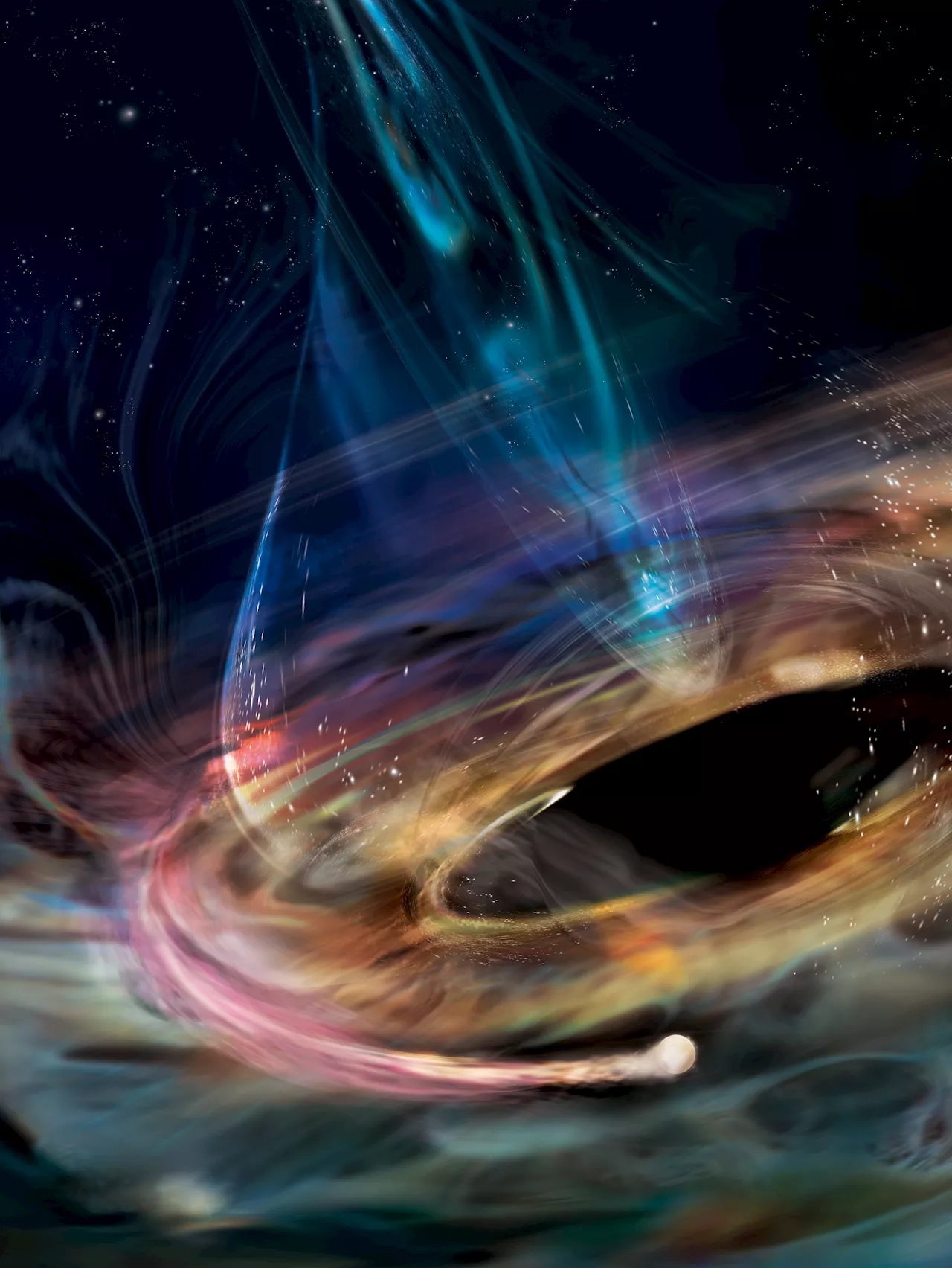Astronomers observed a white dwarf slowing down as it approached a supermassive black hole, challenging existing models of black hole accretion.
Black holes are among the most enigmatic and powerful objects in the cosmos. These gravitational behemoths form when massive stars exhaust their nuclear fuel and collapse under their own gravity, expelling their outer layers in a spectacular supernova explosion. Their existence has been confirmed by various observations, including the detection of gravitational waves and the study of stars orbiting unseen objects.
A recent study led by astronomers from MIT has shed new light on the interactions between black holes and their surrounding environment. Using data from NASA's Chandra X-ray Observatory, the team observed oscillations in the X-ray emissions of a supermassive black hole (SMBH) located in a neighboring galaxy. These oscillations suggested that the SMBH was accreting matter, possibly a white dwarf star.But instead of tearing the white dwarf apart as predicted by conventional models, the observations revealed a curious phenomenon: the white dwarf appeared to be slowing down as it spiraled into the black hole. This unexpected behavior has never been observed before and challenges our understanding of how black holes interact with their surroundings.The study suggests that as the white dwarf approached the black hole, its immense gravitational pull began to strip matter from the companion star. This mass loss could have offset the energy removed by gravitational waves, halting the white dwarf's inward motion and resulting in the observed stabilization of the oscillations. This finding opens up new avenues for exploring the complex physics of black hole accretion and the evolution of binary systems containing white dwarfs and supermassive black holes
Black Holes White Dwarfs Supermassive Black Holes Gravitational Waves Accretion Disks
United States Latest News, United States Headlines
Similar News:You can also read news stories similar to this one that we have collected from other news sources.
 Mysterious X-Ray Flashes From Supermassive Black Hole Point to a Precarious White DwarfAstronomers observe a supermassive black hole exhibiting an unprecedented increase in X-ray flashes. The most likely explanation is a spinning white dwarf, precariously close to the black hole's event horizon.
Mysterious X-Ray Flashes From Supermassive Black Hole Point to a Precarious White DwarfAstronomers observe a supermassive black hole exhibiting an unprecedented increase in X-ray flashes. The most likely explanation is a spinning white dwarf, precariously close to the black hole's event horizon.
Read more »
 'Daredevil' white dwarf star could be closest-known object to a weird black holeRobert Lea is a science journalist in the U.K. whose articles have been published in Physics World, New Scientist, Astronomy Magazine, All About Space, Newsweek and ZME Science. He also writes about science communication for Elsevier and the European Journal of Physics. Rob holds a bachelor of science degree in physics and astronomy from the U.K.
'Daredevil' white dwarf star could be closest-known object to a weird black holeRobert Lea is a science journalist in the U.K. whose articles have been published in Physics World, New Scientist, Astronomy Magazine, All About Space, Newsweek and ZME Science. He also writes about science communication for Elsevier and the European Journal of Physics. Rob holds a bachelor of science degree in physics and astronomy from the U.K.
Read more »
 Black Hole's Unusual Interaction with a White DwarfAstronomers observed an unexpected phenomenon: a black hole consuming a white dwarf without tearing it apart. Instead of the expected orbital decay, the white dwarf appears to be slowing down as it approaches the black hole, possibly due to matter being stripped from it by the intense gravity. This observation challenges existing models and offers a glimpse into the intricate dynamics of these cosmic behemoths.
Black Hole's Unusual Interaction with a White DwarfAstronomers observed an unexpected phenomenon: a black hole consuming a white dwarf without tearing it apart. Instead of the expected orbital decay, the white dwarf appears to be slowing down as it approaches the black hole, possibly due to matter being stripped from it by the intense gravity. This observation challenges existing models and offers a glimpse into the intricate dynamics of these cosmic behemoths.
Read more »
 White-Collar Visa Inflows Dwarf H-1B Debate, Critics ArgueWhile the H-1B visa program draws intense scrutiny, critics highlight a much larger influx of foreign workers entering white-collar jobs via other visa programs. These multi-year visas allow for a resident population of over 1.5 million, nearly twenty times larger than the annual H-1B influx of 85,000. Critics argue these programs create unfair competition, exploit vulnerable workers, and depress wages for American graduates.
White-Collar Visa Inflows Dwarf H-1B Debate, Critics ArgueWhile the H-1B visa program draws intense scrutiny, critics highlight a much larger influx of foreign workers entering white-collar jobs via other visa programs. These multi-year visas allow for a resident population of over 1.5 million, nearly twenty times larger than the annual H-1B influx of 85,000. Critics argue these programs create unfair competition, exploit vulnerable workers, and depress wages for American graduates.
Read more »
 Could Life Survive Around a White Dwarf?A new study explores the possibility of habitable worlds orbiting white dwarf stars, considering the challenges of planetary survival during a star's evolution.
Could Life Survive Around a White Dwarf?A new study explores the possibility of habitable worlds orbiting white dwarf stars, considering the challenges of planetary survival during a star's evolution.
Read more »
 Survey of 26,000 Dead Stars Confirms Key Details of Extreme Stellar BehaviorA survey of 26,000 white dwarf stars provides insights into their behavior and the role they play in the universe. Researchers directly measured the mass of a single, isolated white dwarf, observed a ring of planetary debris orbiting a white dwarf, and analyzed their contribution to carbon in galaxies.
Survey of 26,000 Dead Stars Confirms Key Details of Extreme Stellar BehaviorA survey of 26,000 white dwarf stars provides insights into their behavior and the role they play in the universe. Researchers directly measured the mass of a single, isolated white dwarf, observed a ring of planetary debris orbiting a white dwarf, and analyzed their contribution to carbon in galaxies.
Read more »
